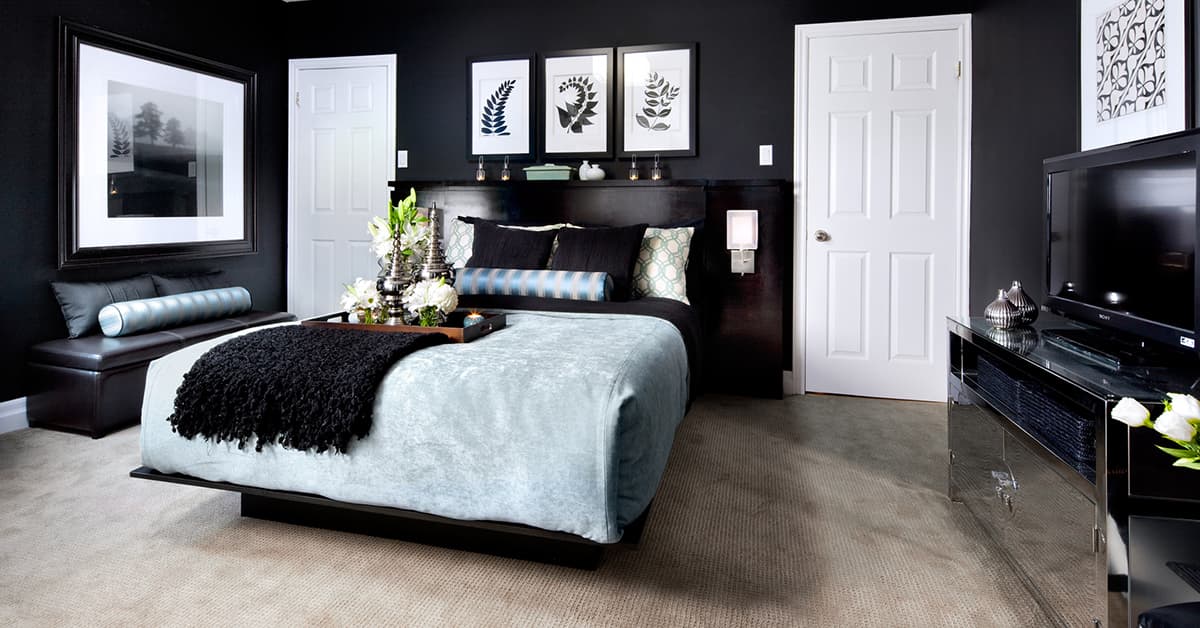
Does the thought of choosing colour for your home leave you paralyzed with fear? You’re not alone. Let’s try to figure out how to get over your fear of colour and start adding it to your home.
What is the fear of colour?
The powers that be (Wikipedia) tell us that an irrational fear or aversion to colour is known as Chromophobia. It is usually a conditioned response, rather than an innate fear. However, true phobias to color are rare.
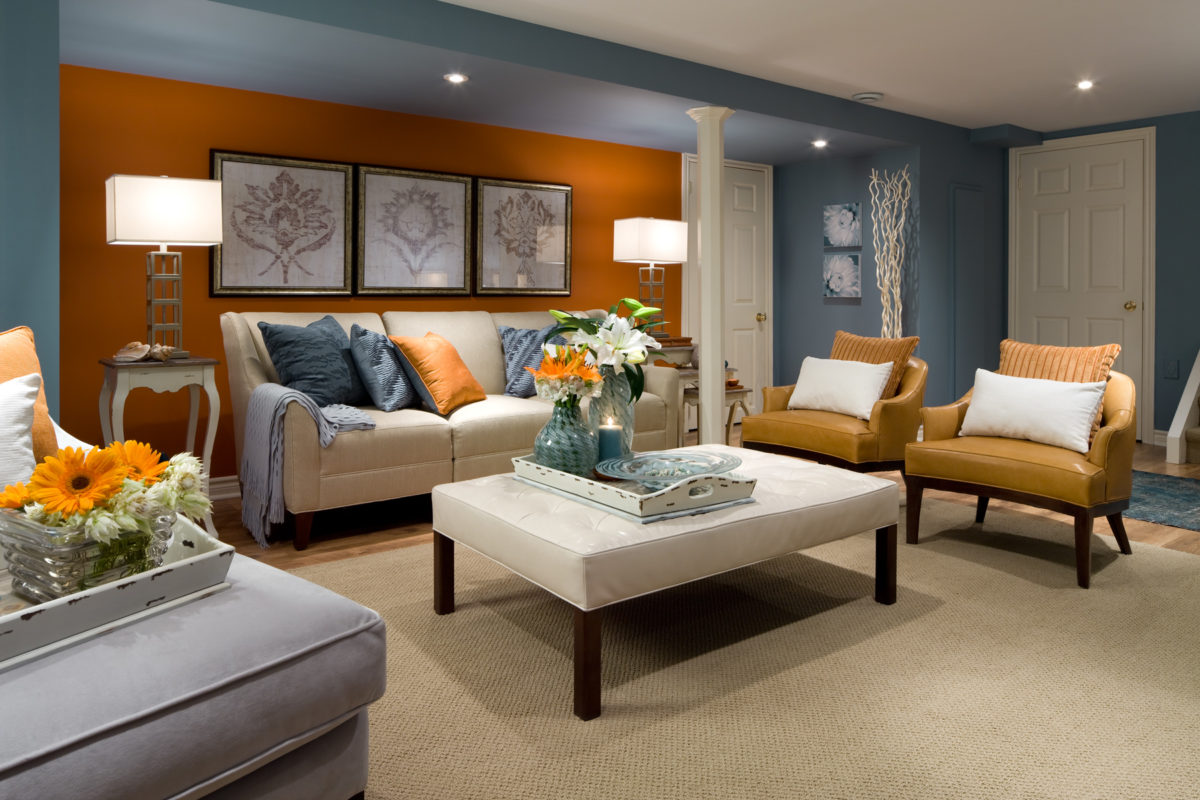
Using two different colours is a bold choice but here it’s tempered with neutrals on the sofa, carpet, side tables and ottoman.
What’s more common is that colors can elicit hormonal responses and psychological reactions. If one reminds you of a bad experience, it leaves you with a negative or sometimes fearful association with it.
Think positively
To help clients make a decision I’ll ask,
“What colours do you associate with a happy time and place?”.
Were you on a beach, digging your toes into white sand looking out over an aquamarine sea? Or, shuffling through freshly fallen crimson leaves in autumn, etc? It’s not deeply scientific but it works because all colour has the power to evoke emotion and mood. We just need to focus on the positive.
There are also qualities we associate with colour.
Xanthophobia is a fear of the color yellow
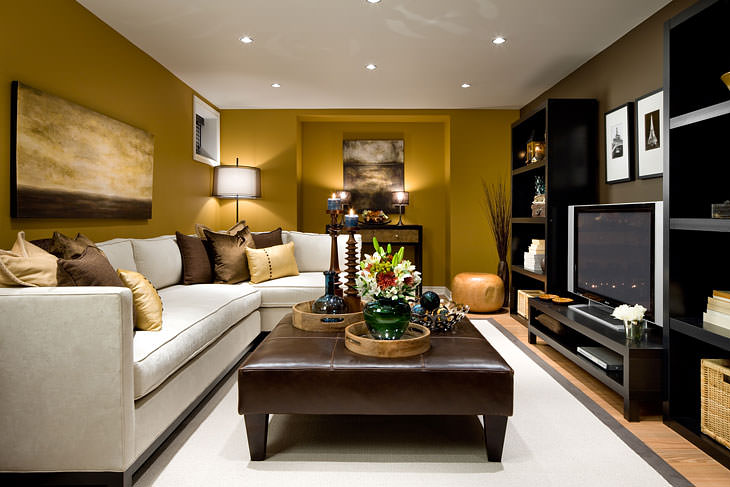
Toned to a golden yellow, the basement walls evoke a sense of energy and positivity.
Yellow is most often associated with the sun and flowers. It’s bright, cheery, inspiring, warm, and increases positive energy and confidence.
Lose your fear: With these great attributes, try adding touches of yellow in a kitchen, family room or basement.
Erythrophobia is fear of the color red
Red is the symbolic color of danger or embarrassment. It is also associated with the fear of blushing, due to embarrassment.
But, it’s also strong, represents passion and can be very intense. Red has been known to elevate blood pressure, increase energy, hunger, and appetite.
Lose your fear: Add a touch of red in the kitchen, a focal wall in the dining room or all over a small space like a powder room.
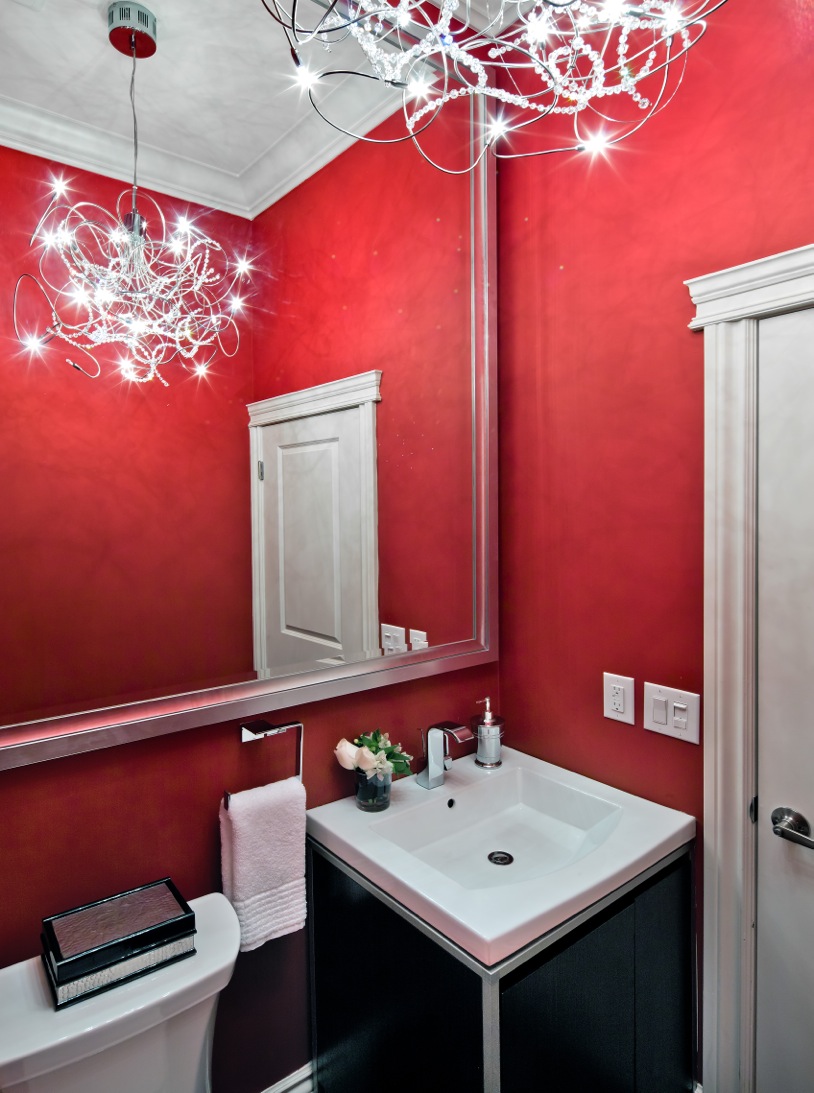
Bold and dramatic but in small doses, a powder room is a great place to try new colours.
Cyanophobia is the fear of the color blue
Studies have shown blue has been linked with productivity, honesty, and authority. Lighter shades of blue have also been associated with lowering blood pressure and steady breathing. Cool blues can also be tied with feelings of serenity and placidity.
Lose your fear: It’s great for offices, bedrooms, kitchens, and bathrooms
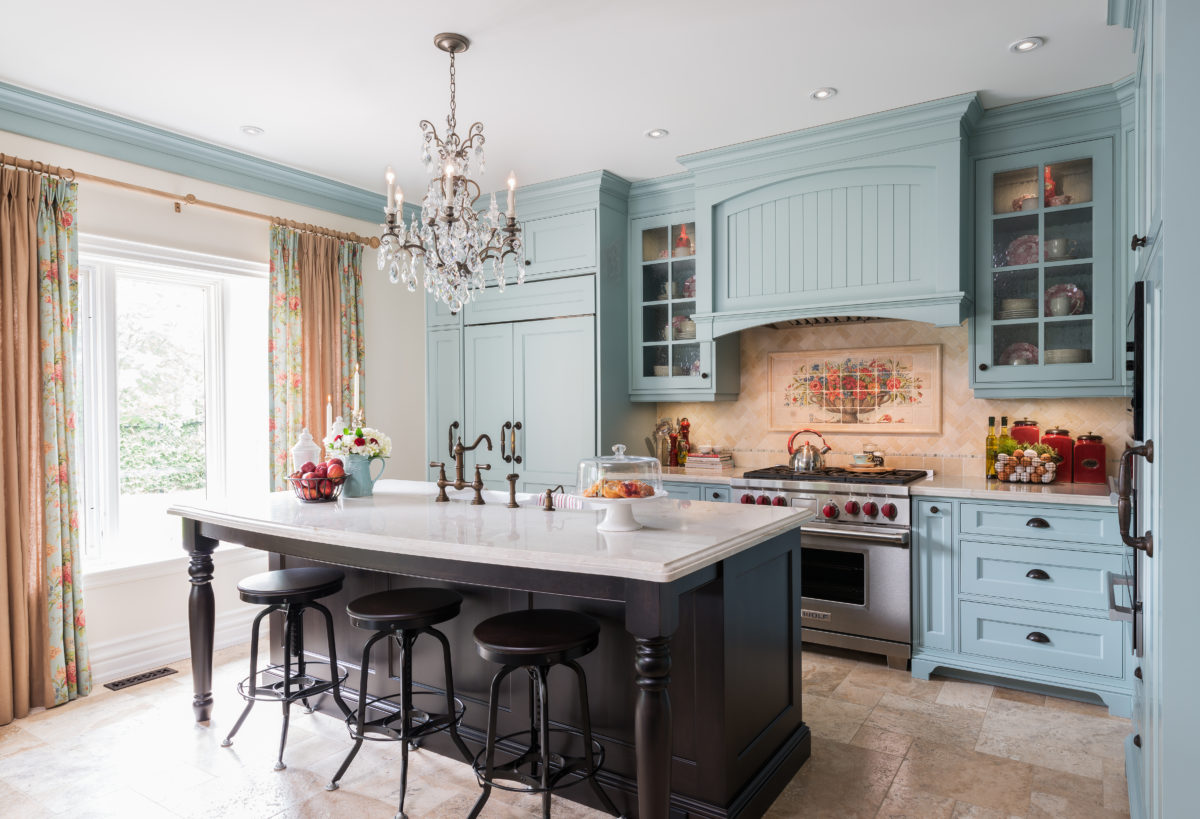
The bucolic French countryside was channeled in this lovely blue kitchen.
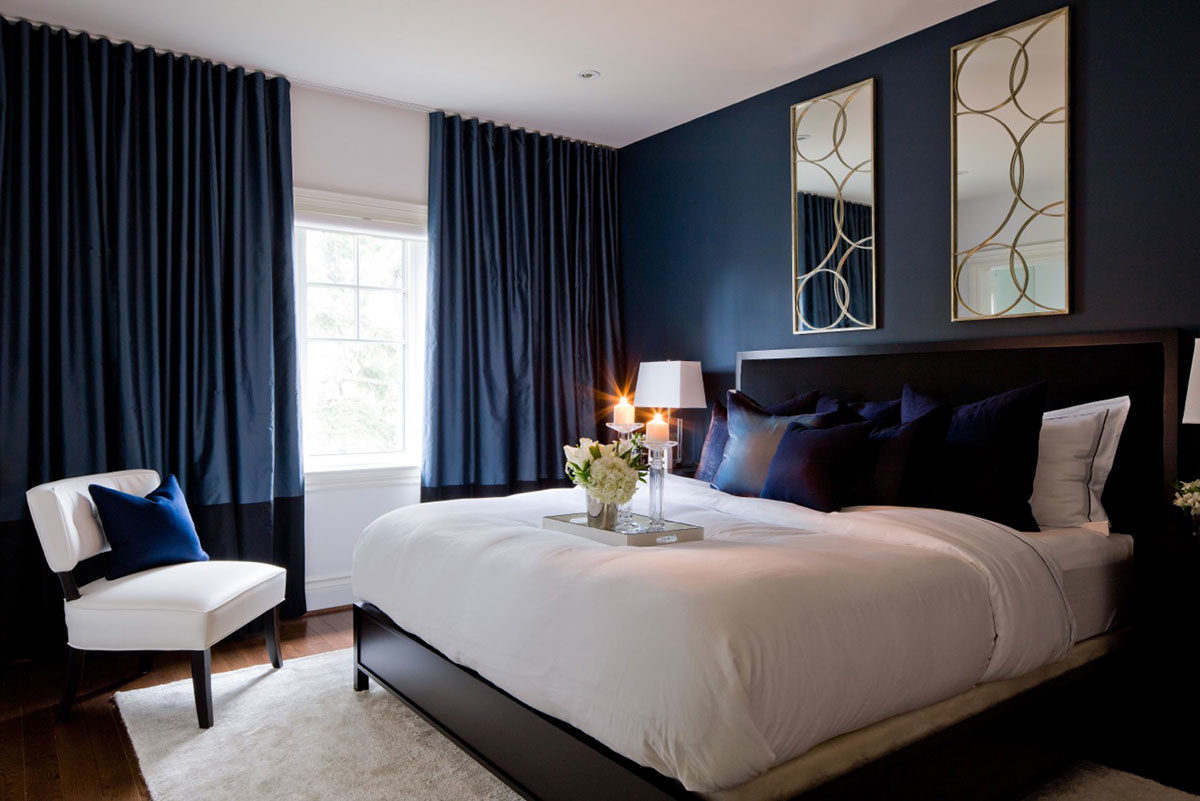
Deep blue keeps us honest and productive.
Porphyrophobia: fear of the color purple
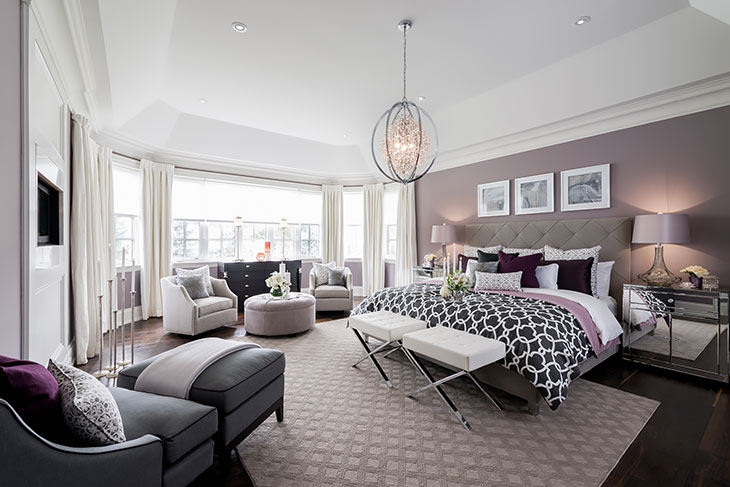
Purple is restful, serene and creative in a bedroom.
Purple, depending on the shade reflects emotions of blue or red tones. Lighter shades of purple are associated with lavender and have been shown to help aid in sleep. It’s known to be relaxing, settle nervous energy and evoke creativity.
Darker shades of purple tend to be associated with royalty and can bring up feelings of pride, wealth and nobility.
Lose your fear: purple is a great colour for bedrooms, basements, and bathrooms.
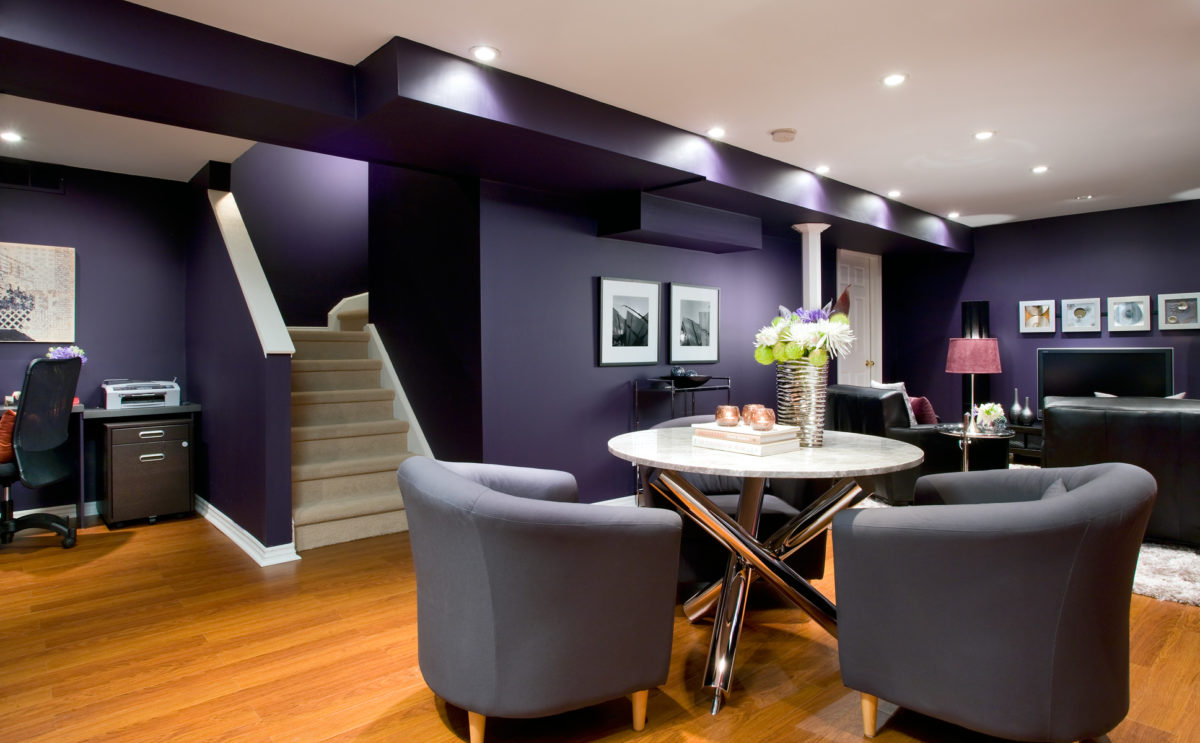
Deep purple is associated with royalty and pride and looks great in a basement
Chrysophobia is the fear of the colour orange
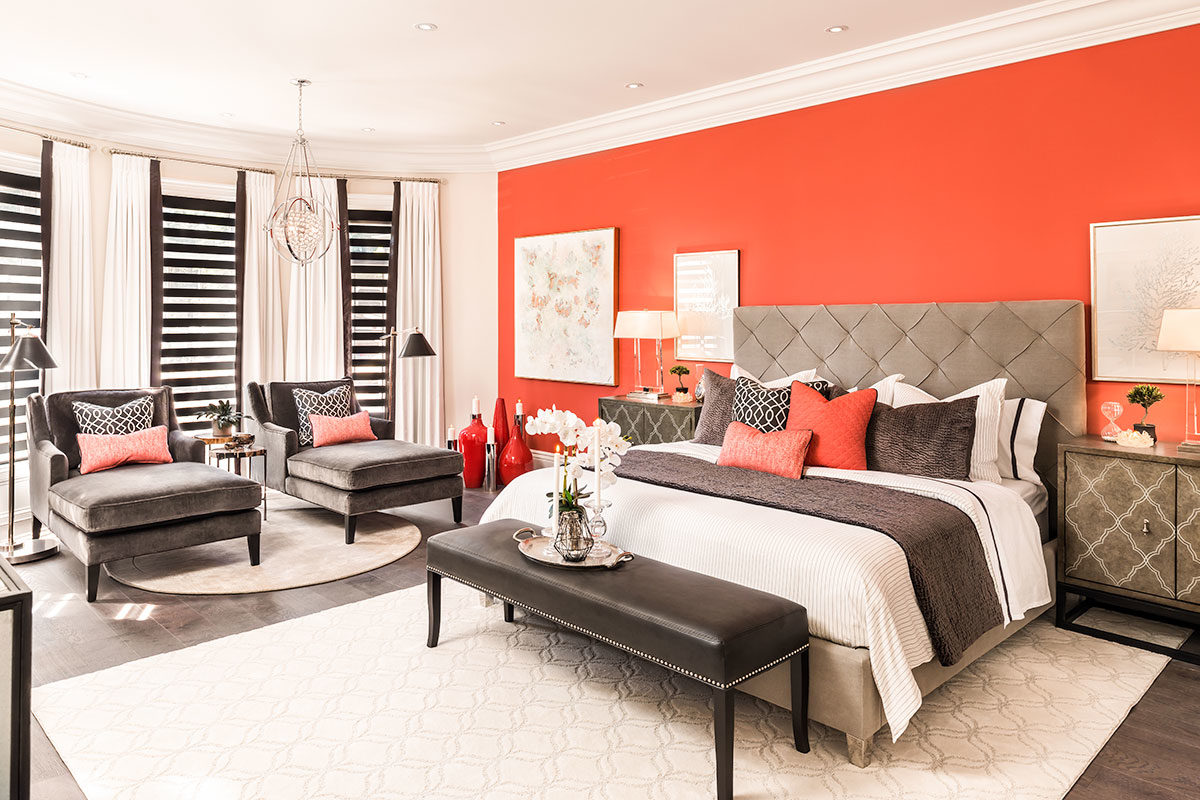
Bright orange is a social colour. Yes, even in a bedroom!
Orange is stimulating! It’s great for conversation, communication, and interaction. It reflects youth and energy.
Lose your fear: Great for a gym, family room, kitchen, or as an accent wall in a bedroom.
Prasinophobia is fear of the colour green
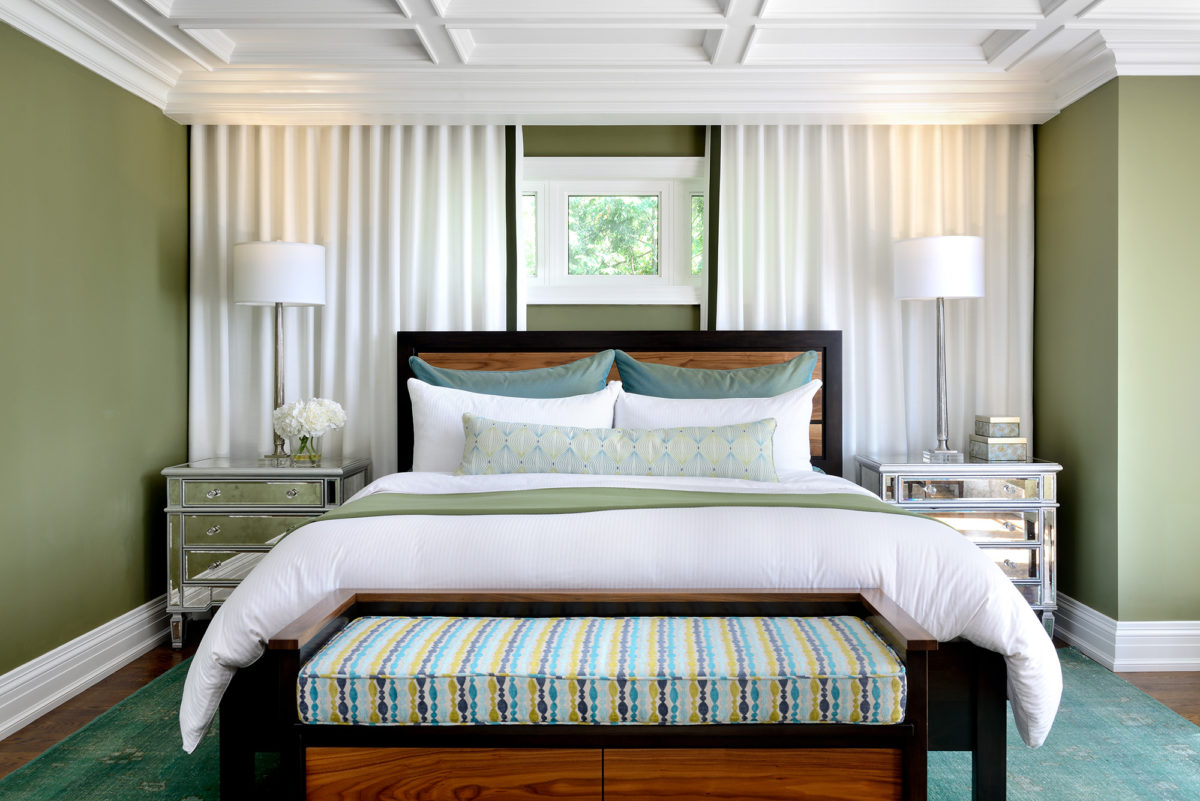
Several shades of green in the bedroom bring a sense of nature into a room.
Light shades of green are the most restful and calming in the spectrum. Green is associated with earth, new growth, and new beginnings. It is full of life, inspiration, peace and good health.
Studies have also shown that soft shades of green are relaxing to the human eye. Green is a great colour for offices, family rooms, bedrooms, and bathrooms.
Melanophobia is the fear of the colour black
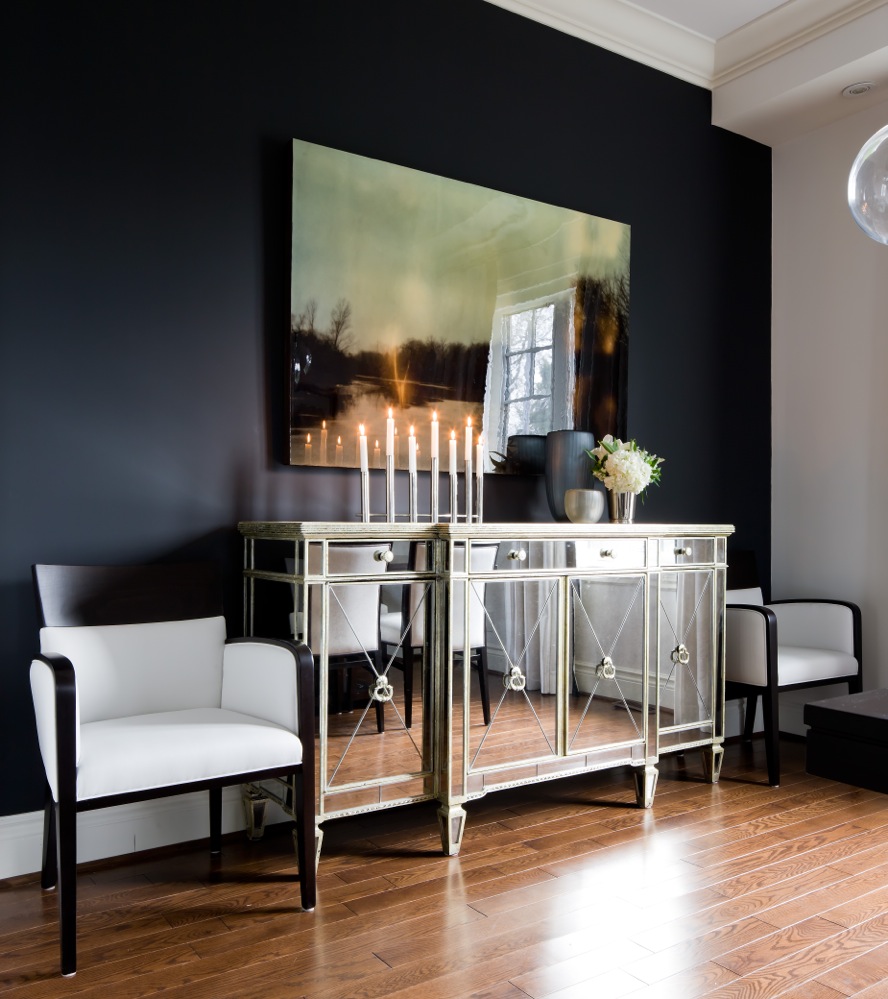
Adding a black accent wall adds drama to any room.
Described as the colour of fear, black also represents strength and confidence.
Lose your fear: Use it as an accent wall in any room. It’s very empowering!
Face your fear of colour by adding what you love to your home. It’s the best way to conquer fear and love your space!

